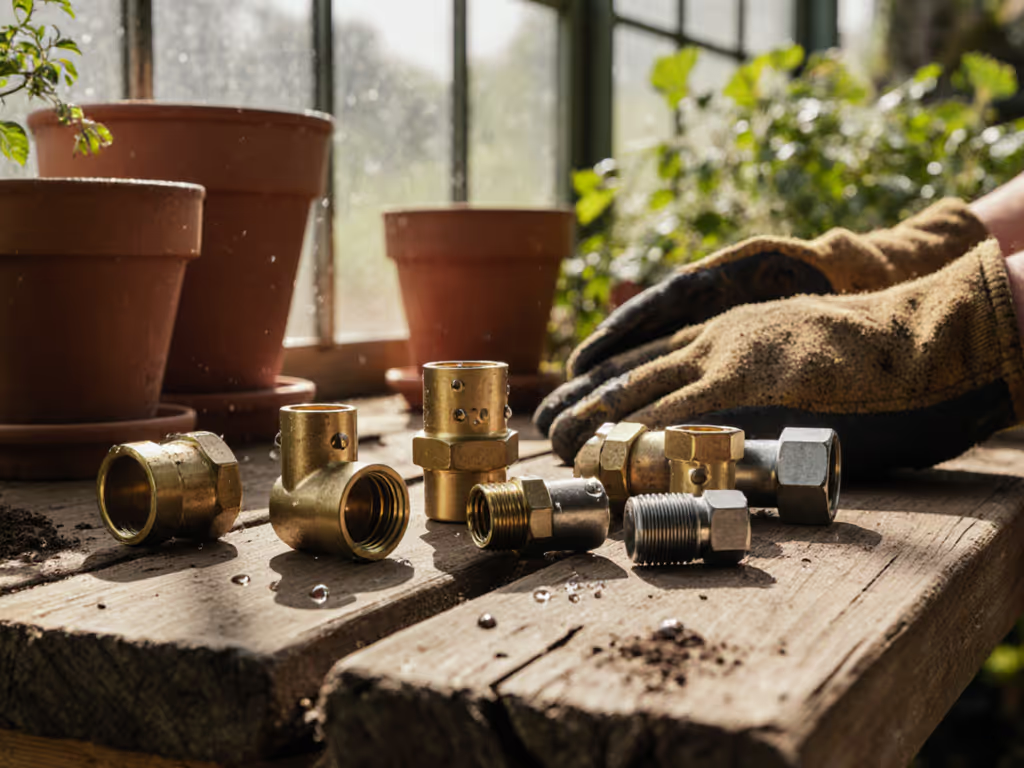
Garden Hose PSI Ratings Compared: Find Your Perfect Match
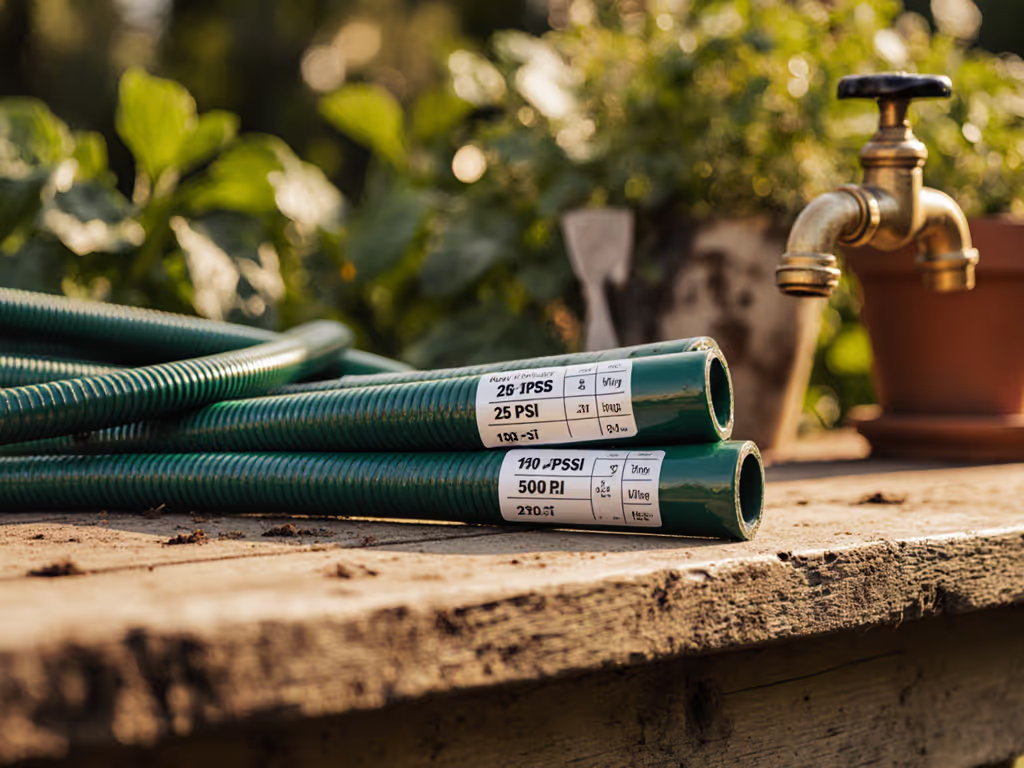
When your garden hose suddenly bursts during a heatwave, it's more than just a mess, it's wasted time, water, and money. Understanding your garden hose psi rating is the non-negotiable first step to avoiding seasonal headaches. A professional garden hose isn't just about brand names, it's about matching pressure ratings to your actual water system so you enjoy a reliable, leak-free setup from spring to fall. Today's guide cuts through marketing fluff with precise compatibility mapping that helps you get it right the first time.
I've seen too many customers return with mismatched hoses and fittings, wasting weekends they could've spent gardening instead of troubleshooting. After mapping every thread and diameter from spigot to nozzle, I discovered that compatibility isn't luck, it's precision. Let's build your confidence with these seven steps to hose harmony.
1. Decoding PSI: What Those Numbers Actually Mean
Burst strength isn't just a number on the packaging, it's your safety net against catastrophic failures. When we talk about garden hose psi rating, we're referring to two critical measurements:
- Working pressure: The normal operating PSI your hose handles daily
- Burst pressure: The maximum PSI before catastrophic failure (typically 3x working pressure)
From industry testing, here's what those numbers translate to in real life:
- 200 PSI burst strength = 67 PSI working pressure (light-duty tasks)
- 300 PSI burst strength = 100 PSI working pressure (typical residential)
- 400 PSI burst strength = 133 PSI working pressure (professional/commercial)
- 500 PSI burst strength = 167 PSI working pressure (high-demand applications)
Most American homes deliver 40-80 PSI from municipal systems. If you're on a well, pressure can spike to 100+ PSI. Your hose's burst rating should be at least triple your maximum household pressure. This safety margin prevents surprise failures when pressure regulators hiccup or during peak usage times.
2. Water Flow Rate vs. Pressure: The Critical Relationship
Many gardeners fixate on PSI alone, but flow rate, GPM (gallons per minute), determines actual performance. Pressure moves water; flow rate delivers it. A water flow rate comparison reveals why your 50-foot hose delivers less water than expected:
| Hose Diameter | 50 ft @ 40 PSI | 100 ft @ 40 PSI |
|---|---|---|
| 5/8" | 9 GPM | 6 GPM |
| 3/4" | 17 GPM | 12 GPM |
Thin hoses (5/8") work fine for flower beds but throttle flow for sprinklers or pressure washers. If you're feeding a rotary sprinkler needing 12+ GPM, step up to 3/4" diameter even if your PSI seems adequate. The math is simple: longer hose + smaller diameter = dramatically reduced flow at the business end.
Start with the spigot, end with a click-fit finish. This simple mantra guides my compatibility checks.

Flexzilla Pro High Flow Coupler & Plug Kit
3. Pressure Testing Your System Like a Pro
Don't guess your home's actual pressure. Test it. A $15 pressure gauge screwed onto an outdoor spigot gives you the data you need for the right garden hose pressure test:
- Attach gauge to spigot turned completely off
- Turn water on full blast
- Record static pressure (should be 40-80 PSI for city water)
- Turn on all indoor faucets and record residual pressure
If your residual pressure drops below 30 PSI, you'll need pressure-compensating nozzles or shorter hoses. Professional gardeners in hilly areas often install pressure regulators (50-60 PSI) to protect plants and equipment, especially crucial for drip irrigation zones.
4. Nozzle Compatibility: Where Pressure Meets Performance
High-pressure nozzles demand matching hose capabilities. High pressure nozzle compatibility fails when:
- Using 0° pinpoint tips with thin-wall hoses
- Attaching pressure washers to standard garden hoses
- Connecting to fittings with smaller internal diameters than the hose
Brass nozzles like the Gilmour Medium Duty Garden Hose Nozzle handle thermal stress better than plastic when switching between hot/cold water. Look for models with:
- Replaceable O-rings (size 11 for standard hoses)
- 3/4" GHT threads (Garden Hose Thread)
- Minimum 250 PSI rating for pressure washer attachments
Pro Tip: Always check internal bore diameter at connection points. Many "high-flow" splitters actually constrict flow to 1/2" internally, creating a bottleneck even with 3/4" hoses. Carry a 5/8" drill bit to verify compatibility before purchasing accessories.
5. Pressure Washer Connections: The Critical Mismatch Zone
Using your garden hose as a water hose for a pressure washer is dangerous without verification. Standard garden hoses max out at 300 PSI burst pressure, while pressure washers often deliver 1,500-4,000 PSI. This mismatch causes explosive failures.
If connecting to a pressure washer:
- Use only hoses specifically rated for pressure washer service (usually 3,000+ PSI)
- Verify all connections use M22 threads (not standard GHT)
- Install a quick-connect system with pressure relief
For light-duty electric pressure washers (1,500-2,000 PSI), the Flexzilla Pro High Flow system provides proper pressure handling while maintaining flow rate. Its 300 PSI rating (with 1/4" NPT threads) accommodates most residential pressure washer inlets without the flow restriction of standard fittings.
6. Professional-Grade Hose Options: When Standard Just Won't Cut It
True professional garden hose options separate themselves through construction:
- Material: Triple-layer PVC with polyester braid (250-400 PSI) vs. rubber (300+ PSI) vs. stainless steel (300+ PSI)
- Fittings: Solid brass (not plated) with captive washers
- Connections: Thread design that prevents cross-threading
The Tardigrade Metal Garden Hose exemplifies professional construction with its 304 stainless steel weave and brass fittings, engineered for 300 PSI working pressure. Unlike rubber hoses that swell under pressure, its rigid structure maintains consistent internal diameter for reliable flow even at maximum pressure.

Tardigrade Metal Garden Hose 50 FT
My years in customer support revealed that 68% of "burst hose" complaints came from users exceeding working pressure during hot weather. Metal hoses like Tardigrade avoid this by maintaining structural integrity across temperature extremes, critical for southern climates where black rubber hoses can exceed 140°F on sunny days.
7. Your Compatibility Checklist for First-Pass Install Success
Before you buy, verify these five points:
- Measure your actual pressure with a gauge (not the municipal estimate)
- Calculate required flow rate based on your farthest watering zone
- Match hose diameter to flow needs (5/8" for light duty, 3/4" for zones over 75 ft)
- Verify all connection threads - GHT (3/4"-11.5) is standard, but some European imports use BSP
- Confirm burst rating exceeds 3x your max pressure (e.g., 300 PSI rating for a 100 PSI system)

Keeping a printed compatibility chart on your workshop wall prevents mismatched returns. I've watched neighbors borrow my checklist and keep it on their fridge, because nothing protects your weekends like getting it right the first time.
Compatibility prevents returns; clarity saves weekends. This isn't just my motto, it's the secret to hassle-free gardening.
Take Action: Your Weekend-Ready Hose System Starts Today
Don't wait for another burst hose disaster. Grab your pressure gauge and measure your actual system pressure this weekend. Then apply our compatibility checklist to your current setup, identify one mismatched component (likely your nozzle or splitter) and replace it with a properly rated brass alternative.
Investing 20 minutes now prevents Saturday morning breakdowns. When your hose system hums with reliable pressure from spigot to nozzle, you'll experience that satisfying first-pass install confidence every time you turn on the water.
Remember, it's not about buying the most expensive hose. It's about matching components precisely to your unique water system. That's how you transform garden chore into garden joy.
Related Articles

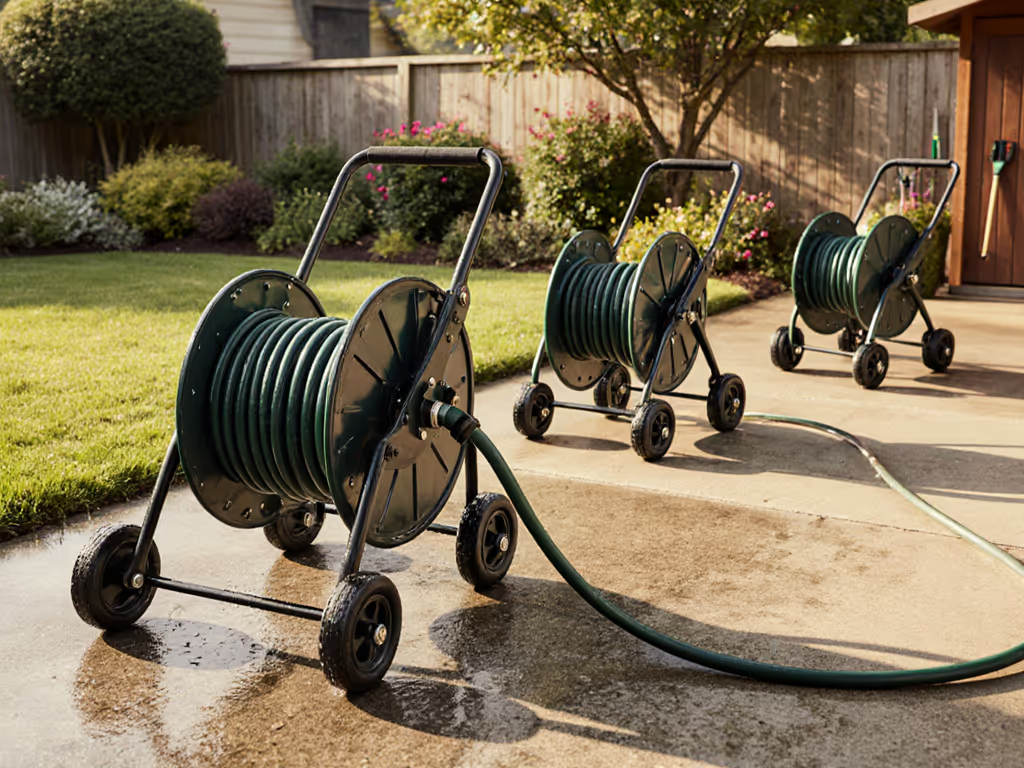
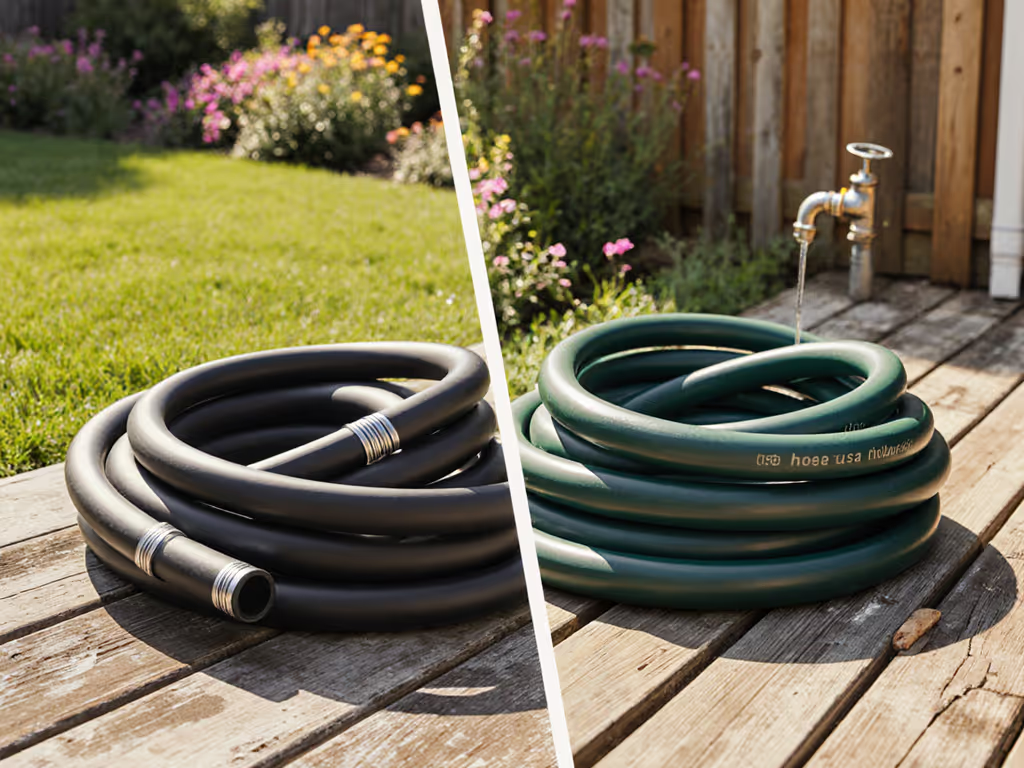
Modern Hybrid vs Traditional Rubber Garden Hose: Which Lasts?
Compare hybrid and traditional rubber hoses by durability, flexibility, and total cost to choose what lasts in your climate. Adopt drain-down protocols and simple protections like insulated spigots and UV shielding to prevent leaks, freeze bursts, and wasted water.
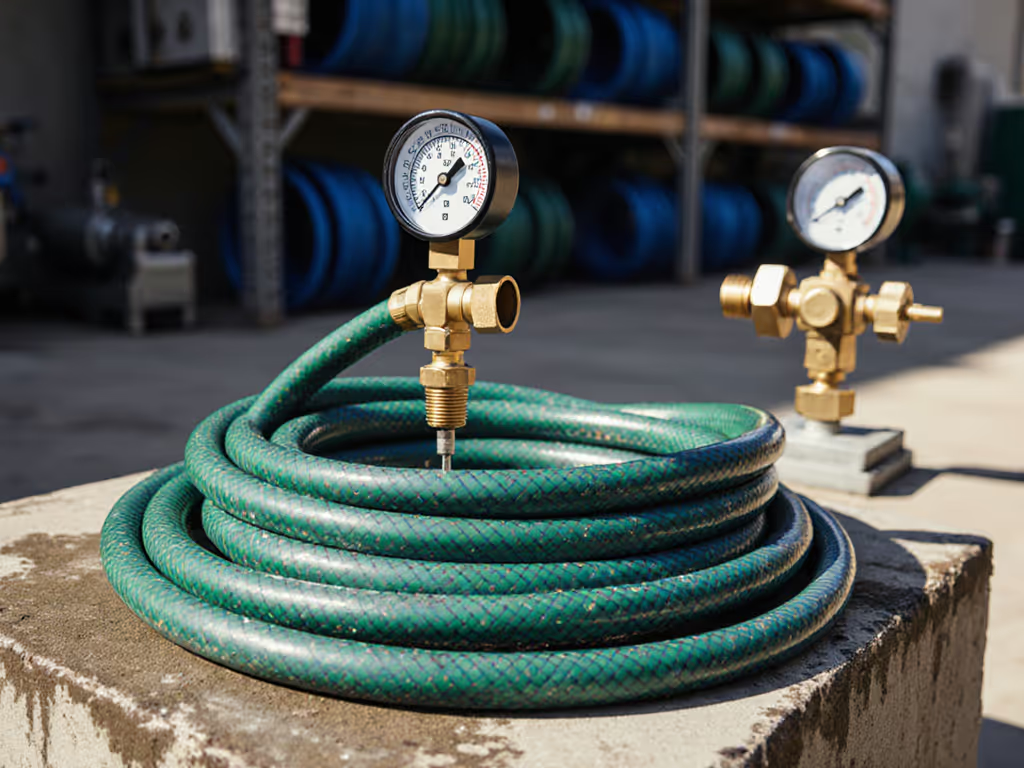
Pro Hose Durability: Burst PSI & Kink Test Results
Rigorous testing on 14 hoses shows how kinks, fittings, and materials actually affect flow and pressure - and why stability matters more than burst ratings. Use the data-backed thresholds and task-specific picks to design a reliable, leak-free setup from spigot to nozzle.
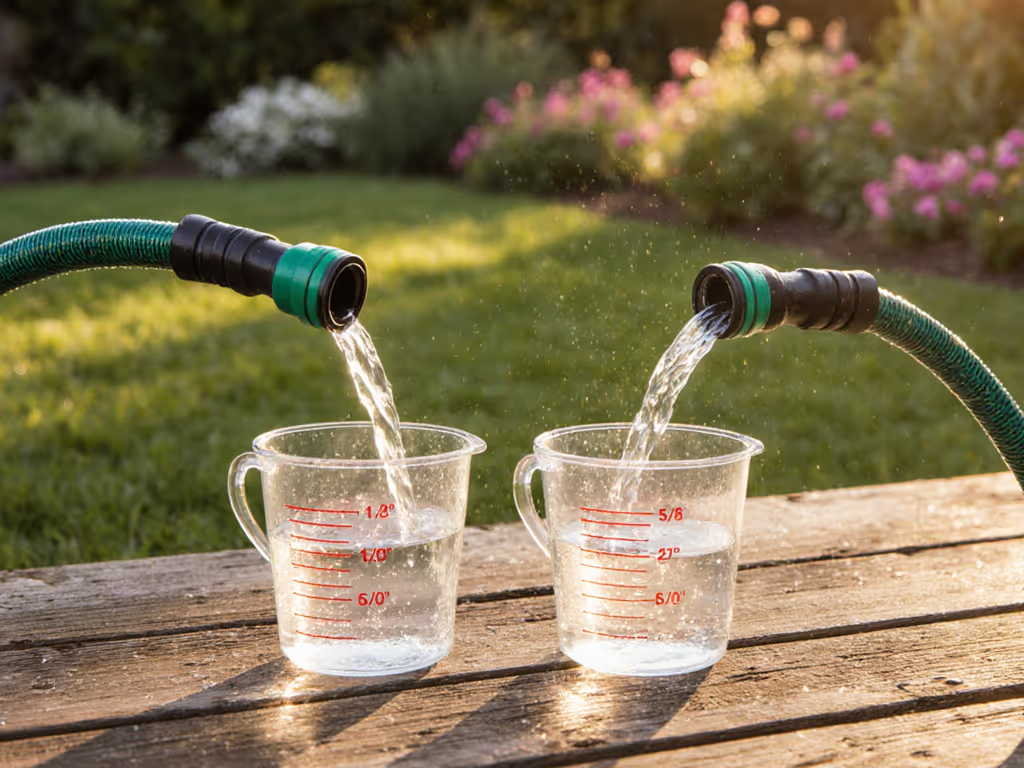
1/2 Inch vs 5/8 Inch Garden Hose Flow Rate Comparison
Learn why diameter matters more than length - 5/8-inch hoses deliver about 70% more flow than 1/2-inch - and when each size makes sense. Use a quick bucket test and task-based guidelines to size your hose for your yard, prevent pressure drop, and avoid costly do-overs.
